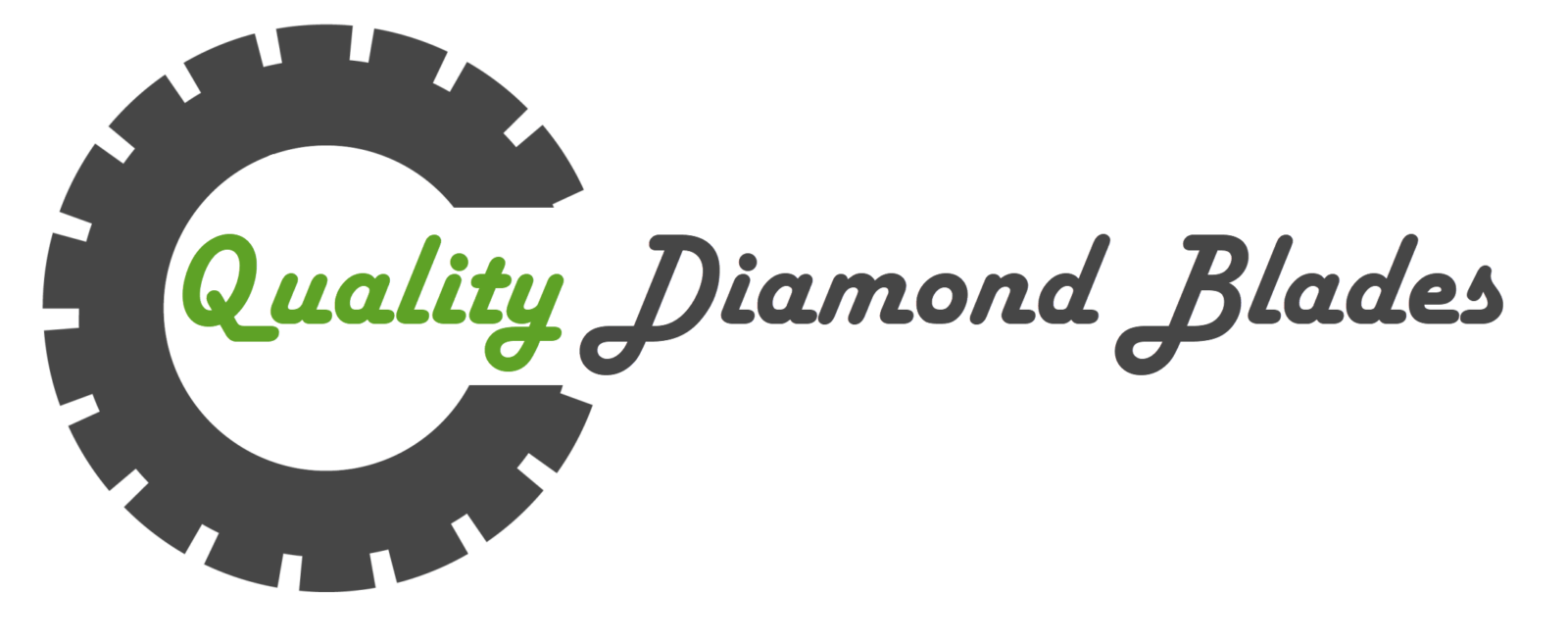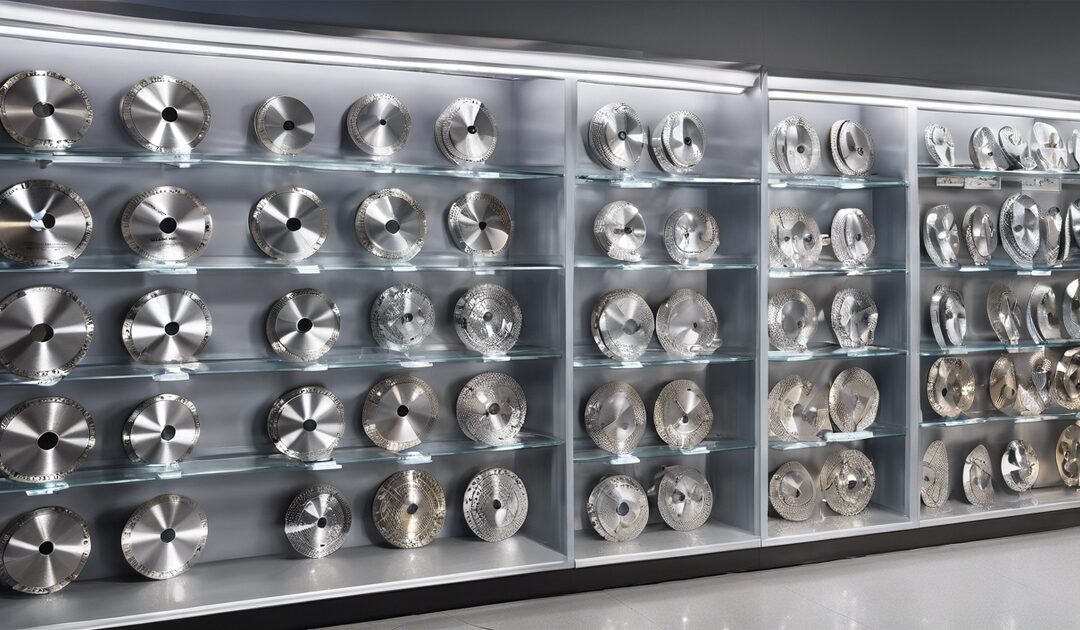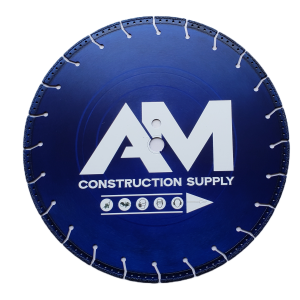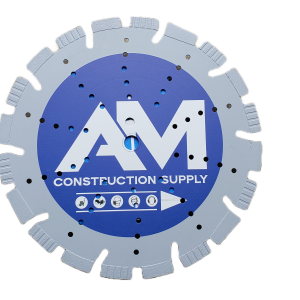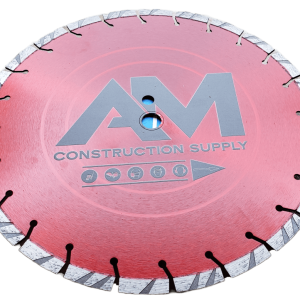When it comes to finding the perfect balance between cost and quality in construction tools, navigating the market for quality diamond blades price can feel like walking a tightrope. On one side, you have the allure of low prices tempting you to compromise on quality; on the other, the promise of unmatched durability at a premium. This post is your guide through this intricate landscape, offering insights that demystify costs and underscore what truly makes a diamond blade worth its price. Whether you’re a seasoned contractor or a DIY enthusiast, understanding how to evaluate quality diamond blades within your budget can transform how you approach your next project.
Key Takeaways
- Investing in high-quality diamond blades ensures longer lifespan and better performance, saving money and time in the long run. Remember, a higher initial cost can lead to lower overall expenses due to fewer replacements and maintenance needs.
- The price of diamond blades is influenced by factors such as the manufacturing process, materials used, and the intended application. Understanding these factors can help you make an informed decision when comparing prices.
- Comparing prices and features of different diamond blades is crucial. Look beyond the price tag and consider the blade’s durability, cutting speed, and suitability for your specific needs.
- Real-world applications highlight the importance of choosing the right diamond blade for the job. Whether cutting concrete, asphalt, or tile, using a blade designed for the material results in cleaner cuts and more efficient work.
- Regular maintenance extends the life of your diamond blades. Simple steps like checking for wear, ensuring proper installation, and following manufacturer recommendations can significantly impact performance and longevity.
- Before making a purchase decision, weigh the benefits of quality versus cost, consider the blade’s intended use, and don’t overlook the value of reliable customer support and product warranties.
Understanding Diamond Blades
Types
Diamond blades come in various designs, each tailored for specific uses. The segmented blades are ideal for cutting through concrete and brick, thanks to their high durability and speed. They have cut-outs or segments that help keep the blade cool during operation.
Turbo blades, on the other hand, offer a finer cut suitable for tile and porcelain. Their continuous rim design allows for smoother cuts but at a slower speed compared to segmented blades.
The continuous rim design is best for materials like glass or ceramic, providing the cleanest cuts. These differences in design directly impact both performance and price. Segmented blades often cost less but might not deliver the precision required for delicate materials like porcelain.
Materials Used
The quality of diamonds used in the blade significantly affects its cutting efficiency. High-quality diamonds can cut through tougher materials more easily, reducing work time. The metal alloy and bonding materials also play crucial roles. They ensure the diamonds stay intact during intense cutting sessions.
Blades made with premium diamond grit and strong bonding materials tend to last longer but also come at a higher price point. This balance between cost and longevity is crucial when choosing the right diamond blade for your needs.
Manufacturing Process
Creating a diamond blade involves several precise steps. It starts with selecting the right diamonds, which are then mixed with metal powder. This mixture is then sintered at high temperatures to form the blade’s cutting edge.
Precision engineering ensures that each diamond is optimally placed for efficient cutting. Innovations in this process have led to blades that not only cut more efficiently but also cost less over time due to their extended lifespan.
Importance of Quality
Longevity
The lifespan of diamond blades hinges on diamond quality and blade construction. High-quality diamonds and robust bonding materials ensure longer use. Proper use and maintenance are key. Users should follow manufacturer guidelines and store blades in dry, safe places.
Premium blades, though pricier, outlast budget options. Their initial cost spreads over many uses, making them more cost-effective in the long run. Budget blades might save money upfront but often need replacing sooner.
Cutting Precision
Blade type, size, and diamond quality directly impact cutting accuracy. For precise cuts, selecting the right blade is crucial. Smaller blades with high-grade diamonds are best for detailed work.
Precision matters in both professional and DIY projects. Professionals can’t afford mistakes that waste materials or time. Hobbyists also benefit from precision, ensuring their projects meet their standards.
Safety
Using the correct blade for specific materials is vital for safety. Mismatched blades can break or cause accidents. Safety tips include wearing protective gear and checking the blade before use.
Features like vibration reduction and cooling holes enhance safety. They make the blade easier to handle and reduce overheating risks.
Factors Influencing Price
Diamond Quality
The grading of diamonds plays a crucial role in the performance and price of diamond blades. High-grade diamonds ensure cleaner, faster cuts, making them essential for professional tasks. The difference between synthetic and natural diamonds also impacts blade manufacturing. Synthetic diamonds offer consistency in quality and are often less expensive than their natural counterparts. However, natural diamonds might provide unique cutting advantages due to their inherent properties.
High-quality diamonds elevate the blade’s efficiency, particularly for professional-grade cutting tasks. They reduce the time needed for cutting while minimizing wear on the blade itself. This aspect justifies their higher cost as they deliver value through longevity and precision.
Blade Size
The diameter of a diamond blade directly influences its cutting depth and speed. Larger blades can cut deeper but might require more power from the cutting equipment. This makes them suitable for heavy-duty projects involving thick materials.
Choosing the right blade size is critical for both performance and safety. Smaller blades are preferred for detailed work on thinner materials, offering greater control and precision. The price of diamond blades increases with size due to the greater amount of material and diamonds required for their production.
Production Techniques
Advanced production methods significantly enhance the durability and performance of diamond blades. These techniques ensure optimal bonding between the diamond segments and the blade core, extending the tool’s lifespan even under harsh conditions.
Technology plays a key role in precise diamond placement within the blade, maximizing cutting efficiency. Such precision engineering contributes to higher manufacturing costs but results in superior products that professionals seek out.
Innovative production techniques not only improve blade quality but also influence pricing and availability in the market. Manufacturers investing in these technologies can offer high-performing blades at competitive prices, catering to a wide range of customer needs.
Comparing Prices
Market Trends
The demand for diamond blades is on the rise, driven by their unmatched durability and cutting precision. Popular types include segmented, continuous rim, and turbo blades, each catering to different materials and cutting conditions. Emerging applications, such as precision cutting in advanced manufacturing and construction, further push this demand.
Market trends significantly influence pricing. As demand for eco-friendly and long-lasting blades grows, manufacturers invest in research and development to meet these needs. This investment often translates into higher prices for consumers. However, the promise of sustainability and longevity appeals to a broad audience, justifying the premium.
Brand Reputation
Brand reputation plays a crucial role in the diamond blade market. Consumers trust well-known brands to deliver quality products, often showing a willingness to pay more for this assurance. The perceived value of blades from reputable brands usually aligns with their performance, offering buyers peace of mind.
Comparatively, blades from lesser-known brands may come at lower prices but carry a risk of inconsistent quality. To establish trust, new entrants in the market focus on customer satisfaction through quality assurance and competitive pricing strategies. Maintaining a strong brand reputation requires consistent product excellence and responsive customer service.
Why Choose Quality Diamond Blades
Superior Materials
Quality diamond blades stand out because of their superior materials. These materials ensure enhanced performance and durability. They can cut through hard materials smoothly, with less wear and tear. This means fewer blade replacements and more consistent results.
The relationship between material quality and blade price is straightforward. High-quality materials often come at a higher cost. However, this initial investment pays off in the long run through reduced maintenance costs and longer blade life.
Innovative materials have also entered the market. They offer improved cutting efficiency and speed. Such advancements make these blades worth their price for professionals who value precision and efficiency.
Advanced Technology
Technological advancements have significantly improved diamond blade performance. Modern manufacturing techniques produce blades that are more reliable and durable. This has made high-quality diamond blades more accessible to a wider audience.
Technology plays a crucial role in making these tools affordable. It also allows for customization of blades for specific applications, enhancing their effectiveness.
With technology, manufacturers can design blades that meet various needs. This flexibility ensures users get products that match their exact requirements, boosting satisfaction.
Customer Satisfaction
Customer satisfaction hinges on several factors, including performance, durability, and price. High-quality diamond blades excel in all these areas, offering value for money that satisfies users.
Feedback from customers is vital for continuous improvement of products. Brands that listen to their users tend to develop better products over time.
To ensure high levels of customer satisfaction, brands employ strategies like offering warranties and responsive customer service. These efforts show commitment to quality and reliability, fostering trust among users.
Real-World Applications
Construction Projects
Diamond blades play a critical role in construction projects. They cut through materials like concrete, brick, and stone. The right blade ensures efficiency and precision. For residential renovations or large-scale builds, choosing the correct blade is crucial.
Selecting the right diamond blade depends on the material and task. Hard materials require a different blade than softer ones. This choice affects both performance and cost. Project budgets can significantly benefit from careful blade selection.
Home DIY Tasks
For home DIY projects, such as tile cutting or masonry, choosing the right diamond blade is vital. It’s about finding the balance between quality and price. High-quality blades ensure clean cuts but at a higher price. For occasional use, it might not be necessary to invest in the most expensive options.
Safety is paramount for amateur users. A wrong choice can lead to accidents or damage to materials. Therefore, DIY enthusiasts must consider both quality and safety when selecting a diamond blade for their tasks.
Industrial Use
In industrial settings, diamond blades face demanding requirements. High-volume cutting and precision are essential. Industries benefit from investing in premium blades that withstand rigorous use.
The benefits of high-quality blades in industrial applications are clear. They enhance productivity and reduce operational costs over time. The initial investment pays off by minimizing downtime and maintenance needs.
Maintenance Tips
Cleaning Practices
Proper cleaning of diamond blades is crucial for maintaining their performance and extending their lifespan. After each use, it’s essential to remove any debris or materials that may have adhered to the blade. This prevents buildup that can compromise the blade’s cutting efficiency. For wet cutting blades, rinsing with water is often sufficient. However, dry cutting blades might require brushing or air blowing to remove dust and particles.
The material cut also influences cleaning practices. Blades used on softer materials like asphalt tend to accumulate more residue than those used on harder materials like concrete. Therefore, they might need more frequent or thorough cleaning. Regular cleaning not only ensures clean cuts but also reduces the risk of overheating and wear on the blade.
Storage Solutions
Storing diamond blades correctly is as important as cleaning them properly. Safe storage prevents physical damage, corrosion, and ensures that the blades are ready for use when needed. Blades should be stored in a dry, cool place away from direct sunlight and extreme temperatures. Hanging them vertically on racks or using specially designed cases can protect them from accidental drops or impacts.
For different blade sizes and types, customized storage solutions are available. Smaller blades can be stored in drawers with padded separators, while larger ones might require wall-mounted brackets for support. Proper storage not only impacts a blade’s longevity but also its readiness for use in various real-world applications.
Swag Items Overview
Promotional Benefits
Promotions and discounts often play a crucial role in influencing buyer decisions. When quality diamond blades are offered at reduced prices, it not only attracts customers but also fosters brand loyalty. These strategies are particularly effective for introducing new technologies in diamond blades to the market. Consumers are more willing to try out new products when they come with the promise of savings.
Retailers and manufacturers benefit from promotional offers too. They see an uptick in sales volume and can clear out inventory to make room for the latest products. Moreover, promotions serve as a form of advertising, increasing brand recognition without the hefty price tag of traditional marketing campaigns.
Brand Visibility
In the competitive market of diamond blades, increasing brand visibility is paramount. Brands employ various strategies to achieve this goal. Online marketing through social media and SEO plays a significant role in reaching a wider audience. Trade shows and professional endorsements further cement a brand’s presence in the industry.
These efforts contribute significantly to building consumer trust. When customers repeatedly see a brand associated with high-quality products at trade shows or endorsed by professionals they respect, it enhances their perception of the brand’s reliability. This trust translates into increased sales as consumers feel more confident in their purchasing decisions.
Making the Purchase Decision
Budget Considerations
When shopping for diamond blades, balancing quality and cost is crucial. High-quality blades often come with a higher price tag but offer better performance and longevity. This is especially important for frequent users who rely on their tools daily. Investing in a top-notch blade can lead to long-term savings by reducing the need for replacements.
For occasional or light-duty use, there are budget-friendly options available. These can be cost-effective without significantly compromising on performance. It’s essential to assess your needs carefully and opt for a blade that offers the best value within your budget.
Warranty and Support
The importance of warranty coverage and customer support cannot be overstated when purchasing diamond blades. A solid warranty not only protects your investment but also signals a manufacturer’s confidence in their product’s quality. Typical warranty terms range from one to several years, covering defects in materials and workmanship.
Strong warranty and support offerings highlight a brand’s commitment to customer satisfaction. They provide peace of mind and ensure assistance is readily available should any issues arise with your purchase. Always check the warranty terms and customer support options before making your decision.
Final Remarks
Navigating the world of diamond blades doesn’t have to be a daunting task. Armed with knowledge about quality, price factors, and real-world applications, you’re in a prime position to make an informed purchase decision. Quality diamond blades are an investment that pays off, not just in terms of durability and performance, but also in the precision and efficiency they bring to your projects. Remember, skimping on quality might save you bucks upfront but will cost you more in the long run due to frequent replacements and subpar results.
Now’s the time to act. Choose quality diamond blades that match your needs and budget. By doing so, you ensure your projects stand out for all the right reasons. And don’t forget, maintaining your blades properly will extend their life even further, giving you the best bang for your buck. Ready to make your purchase? Dive in and see the difference quality makes.
Frequently Asked Questions
What are diamond blades used for?
Diamond blades are designed for cutting through tough materials like concrete, tile, and stone efficiently, offering precision and durability in construction and renovation projects.
How does quality affect a diamond blade’s performance?
High-quality diamond blades ensure longer life, faster cutting speed, and less downtime for replacement, significantly improving project efficiency and outcomes.
What factors influence the price of diamond blades?
The price of diamond blades is influenced by the quality of the diamonds used, the manufacturing process, and the blade’s size and type. High-quality materials and advanced technology usually result in a higher price but better performance.
Is it worth investing in high-quality diamond blades?
Yes, investing in high-quality diamond blades pays off in terms of durability, cutting speed, and overall project efficiency, reducing long-term costs associated with frequent replacements and downtime.
How can I compare prices of diamond blades effectively?
To compare prices effectively, consider not only the upfront cost but also the blade’s lifespan, cutting efficiency, and suitability for your specific applications to ensure you’re getting the best value for your investment.
Where can I find real-world applications of quality diamond blades?
Real-world applications can be found in construction projects involving cutting concrete slabs, asphalt paving, tile setting or masonry work. These examples demonstrate how quality blades enhance project outcomes.
Any maintenance tips for extending the life of my diamond blade?
Regularly checking for wear and tear, ensuring proper installation on compatible saws, using water when required to reduce heat buildup, and storing them properly when not in use can significantly extend their life.
